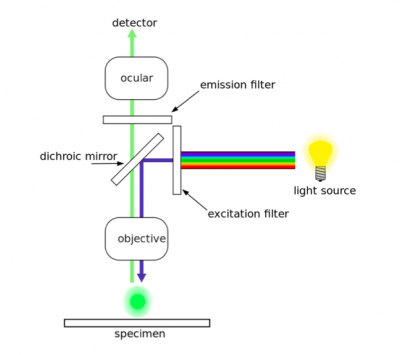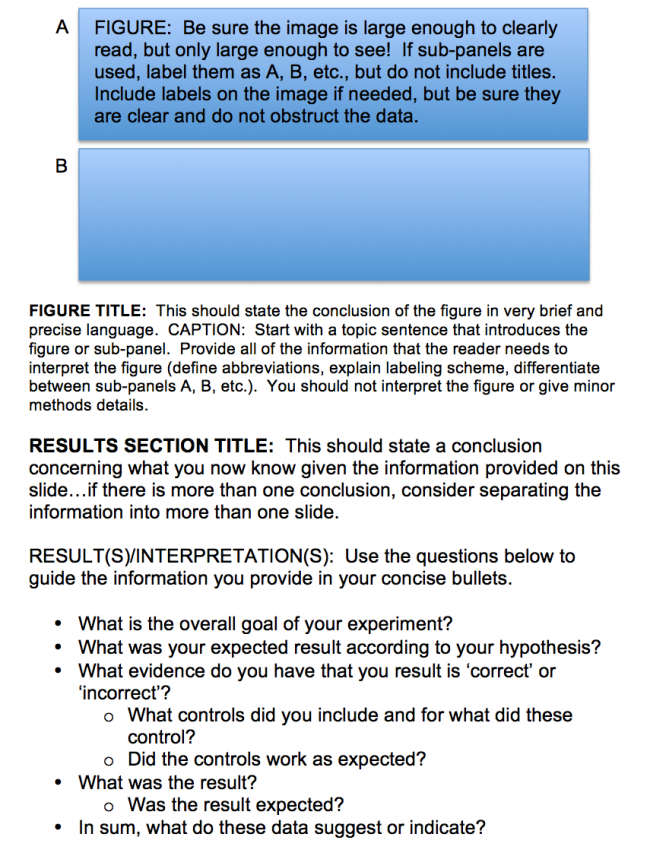Difference between revisions of "20.109(F17):Visualize and analyze data for sub-nuclear foci assay (Day7)"
(→Part 2: Process images for H2AX assay) |
(→Part 2: Process images for H2AX assay) |
||
| Line 26: | Line 26: | ||
===Part 2: Process images for H2AX assay=== | ===Part 2: Process images for H2AX assay=== | ||
#Ensure that all of your H2AX images are in one folder. | #Ensure that all of your H2AX images are in one folder. | ||
| − | #Download AnalyzeH2AX_batch script | + | #Download AnalyzeH2AX_batch script [[Media:AnalyzeH2AX batch.txt|here]]. |
#Identify fluorescence intensity threshold values that will identify the nucleus in the DAPI channel. | #Identify fluorescence intensity threshold values that will identify the nucleus in the DAPI channel. | ||
#*Open a representative image in ImageJ. | #*Open a representative image in ImageJ. | ||
Revision as of 20:25, 1 October 2017
Contents
Introduction
As a brief reminder, two antibodies were used in the gamma-H2AX assay. The first antibody, or primary antibody, was anti-gamma-H2AX and raised in a mouse. The secondary antibody was anti-mouse and raised in a goat, more importantly, this molecule is conjugated to a fluorescent dye tag called Alexa Fluor 488. The Alexa Fluor 488 tag is a bright, green fluorescent dye that is excited at 488 nm. To visualize the abundance of double-strand breaks in your H2AX assay samples, we will use fluorescence microscopy.
In fluorescence microscopy the specimen is illuminated with a wavelength of light specific to the excitation of the fluorescent tag used to target the feature of interest. The excitation wavelength is absorbed by the fluorescent tag, which causes it to emit light at a longer, less energetic wavelength. Typically, fluorescence microscopes used in biology are an epifluorescence type with a single light path (the objective) for excitation and emission detection, as depicted in the diagram above.
Fluorescence, or epifluorescence, microscopes are composed of a light source, an excitation filter, a dichroic mirror, and an emission filter. The filters and the dichroic mirror are specific to the spectral excitation and emission characteristics of the fluorescent tag. To visualize fluorescence, light at the excitation wavelength is focused on the sample. The light emission from the sample is focused by the objective to a detector.
Today you will image the samples you tested using the γH2AX assay and complete the data analysis.
Protocols
Part 1: Visualize H2AX assay results
- Make sure to have TBS solution available before you start. Aspirate the secondary antibody solution off the coverslip and immediately add 150 μL of TBS. Do not let the coverslips dry out during this process.
- To complete the post secondary wash, add 150 μL of TBS per coverslip, let incubate at room temperature for 3 min covered, then aspirate.
- Repeat this step twice.
- Obtain glass slides from the front laboratory bench and label your slides with all of your experimental information and group name, add 5 μL of mounting media to the slide.
- Aspirate the final TBS wash and using tweezers place the coverslip cell-side down on the mounting media "spot" on the microscope slide. Try your best to avoid bubbles by slowly placing the coverslip over the mounting media.
- The cell-side of the coverslide is the side that was facing up in the staining chamber.
- Complete Steps #3-4 for coverslips from all of the wells in your plate.
- Alert the teaching faculty when all of your microscope slides are ready and you will be escorted to the microscope in the Engelward laboratory.
Part 2: Process images for H2AX assay
- Ensure that all of your H2AX images are in one folder.
- Download AnalyzeH2AX_batch script here.
- Identify fluorescence intensity threshold values that will identify the nucleus in the DAPI channel.
- Open a representative image in ImageJ.
- Scroll to the second image in the stack, which corresponds to the DAPI channel.
- Go to Image--> Adjust --> Threshold
- Check the box for "Dark Background"
- Make sure the cell nuclei are highlighted in red.
- Adjust the threshold values to properly identify the majority of the cells' nuclei.
- Jot down the threshold values.
- Check a few other files to see if the same threshold values work for them.
- Settle on and write down the threshold values for the DAPI channel that you will then use to analyze all the images.
- Identify fluorescence intensity threshold values that will identify the gamma-H2AX sites in the FITC channel.
- Open an image that you expect to have the most gamma-H2AX sites.
- Scroll to the third image in the stack, which corresponds to the FITC channel.
- Follow the steps above to find the threshold values.
- Jot down the threshold values that you will use to analyze the FITC channel of all your image files.
- Run the ImageJ macros to use fluorescence intensity to identify all the cells (DAPI channel) and cells with a significant amount of gamma-H2AX sites (FITC channel).
- In ImageJ, go to Plugins--> Macros--> Run, and click on the AnalyzeH2AX_batch script that you downloaded.
- When the script prompts you to "Choose input folder," choose the folder containing all your .tif image stacks, and click "Open."
- In the dialog box titled "Choose Intensity Threshold Values," type in all the corresponding threshold values you have chosen, and click "OK."
- Please wait for the script to run through all your images. In the end all the image files will pop up, along with the "drawings" that show where it identified cells in your images
- The script will output resulting Excel files into your image folder. Each image will have one corresponding Excel file for the DAPI channel, and another for the FITC channel. The Excel files contain raw data of each region of interest identified by the fluorescence intensity thresholds you chose.
- You may use the Excel files to assess how best to quantify the difference between each of your conditions. One way would be to identify the fraction of cells in each condition that have a significant amount of double strand breaks. This fraction would equal the number of cells identified in the FITC channel (high number of gamma-H2AX sites) divided by the number of cells identified by the DAPI channel (identifying each cell in the image by its nucleus).
- On the "Drawing" windows that popped up, similar to the images shown here, each area identified by your fluorescence thresholds are assigned a number. Each of those numbers are listed in the corresponding Excel spreadsheets, followed by the information assessed by the ImageJ script.
- For the DAPI channel, most of the identified regions correspond to a single nuclei. For the FITC channel, one may argue that for a cell having a significant amount of double strand breaks, the entire nucleus (rather than a few spots) shows up as being identified by the intensity thresholds provided.
- Thus, one way to identify the number of cells having a significant amount of gamma-H2AX sites is to determine a cutoff for the smallest "Area" of the cells of interest by corresponding the number of the encircled regions to the "Area" column in the corresponding Excel spreadsheets.
- A count from each spreadsheet can then be used for quantification of your results.
Part 3: Draft first data slide for Data summary
Reagents list
- Tris buffer saline (TBS, Biorad)
- Mounting media ProLong gold with DAPI (Molecular Probes)
Next day:
Previous day: Examine sub-nuclear foci abundance to measure DNA damage

